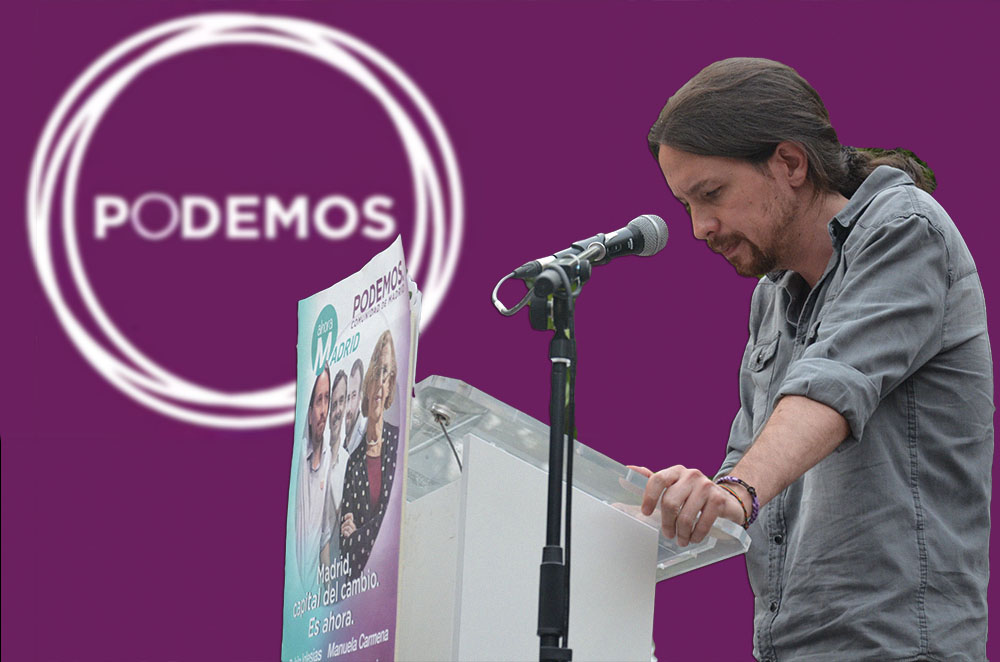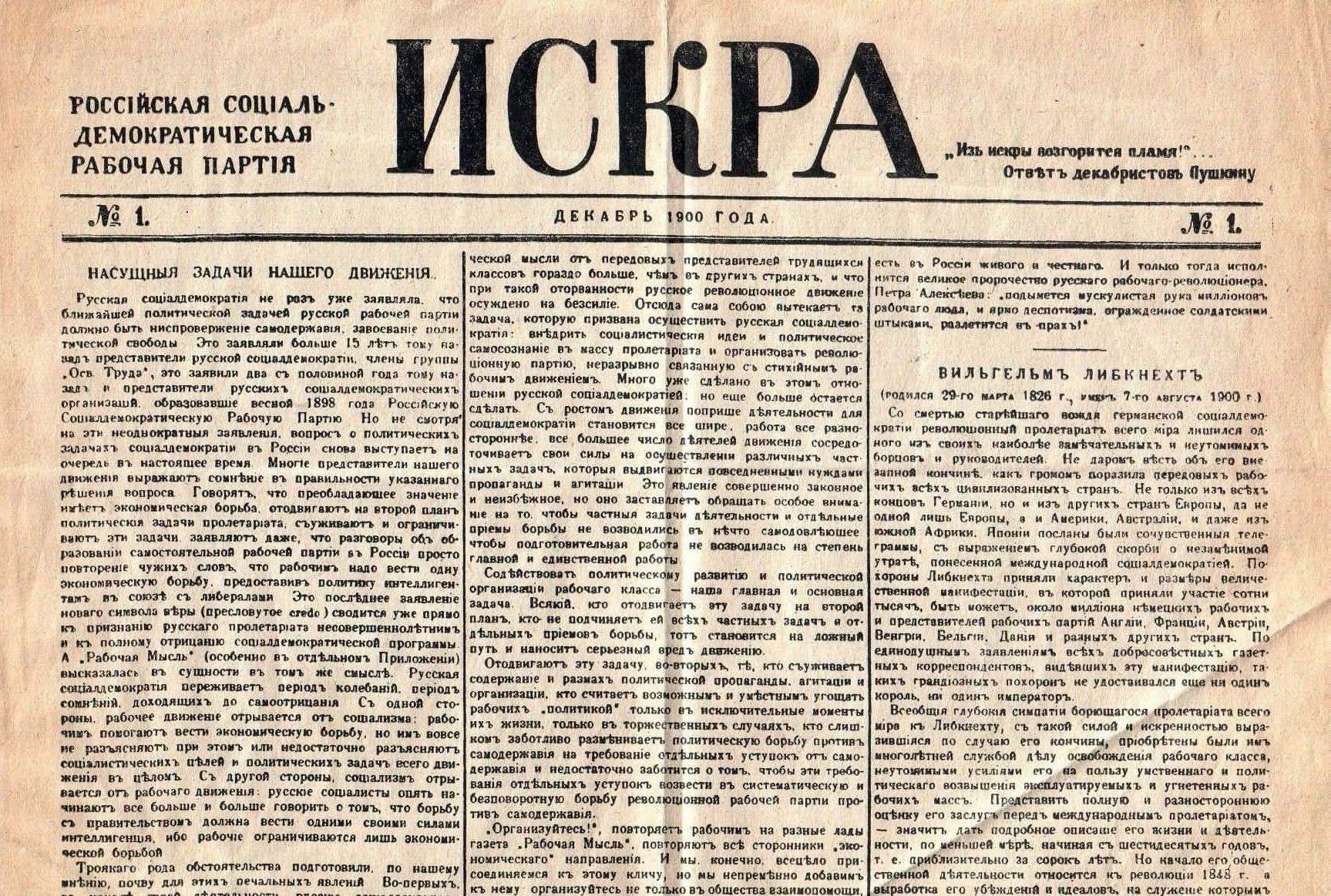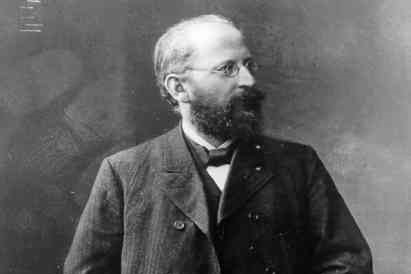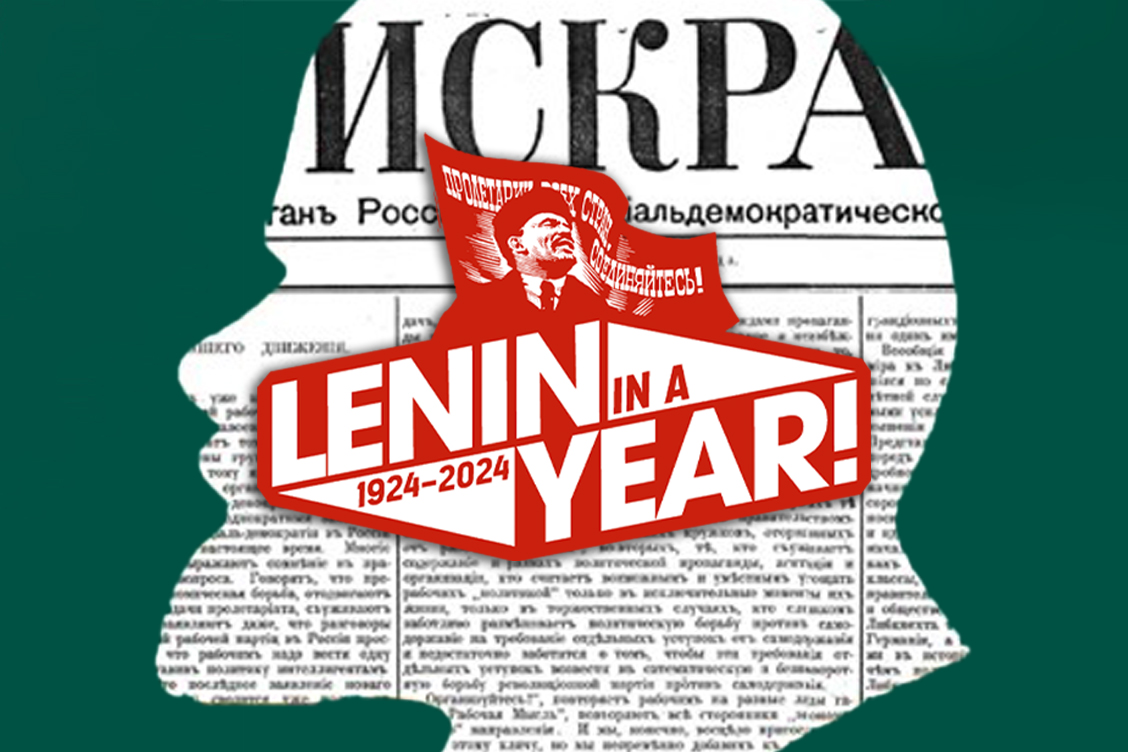In 1901, Lenin published his much awaited book, What is to be Done? This masterpiece of Marxist literature is an unparalleled handbook for anyone wanting to build a Bolshevik party, for anyone serious about the struggle to overthrow capitalism today. In this article, we explain what gives this book its enduring power, and why every communist should conquer this text today.
After the delegates of the first congress of the Russian Social Democratic Labour Party (RSDLP) were arrested in 1898, the Marxist movement in Russia was in disarray. Amateur methods, looseness and a lack of political clarity prevailed in the small, isolated Marxist circles across Russia.
After leaving Siberian exile, Lenin headed to western Europe, where he, Martov and Potresov joined up with the veterans of the Marxist movement, Plekhanov, Zasulich and Axelrod. Together, they formed a new paper, Iskra, as a tool for remedying these problems. By means of this paper, they set about drawing together all the threads, bringing direction, clarity and organisation to the party.
[For a fuller analysis of this important chapter in Lenin’s life, we recommend chapter 5 of Rob Sewell and Alan Woods’ new biography, In Defence of Lenin.]
But their efforts were resisted by some. A trend existed in the party that made a virtue out of the deplorable situation the Marxists laboured under. They celebrated the amateurish, confused methods, and they worshipped the purely spontaneous nature of the workers’ movement, instead of trying to raise it to the level of a conscious, organised movement under communist leadership. This trend was known as ‘Economism’.
It was necessary to wage a sharp political struggle to defeat this tendency if the party was to overcome the crisis of its adolescence and enter adulthood. And it was always in sharp clashes of ideas that we saw Lenin at his very best.
The short book, What is to be Done?, was the fruit of this polemic. The masterpiece of Marxist literature is full of lessons for today on how to build a revolutionary party. It remains essential reading for every serious communist.
As Lenin’s lifelong partner and comrade Nadezhda Krupskaya put it, this is a book that should “be studied by everyone who wants to be a Leninist in practice, and not in words alone.”
Economism
From the mid-1890s, Russia had seen an enormous upsurge of workers’ unrest. Strikes broke out in all the major factories. The Marxists threw themselves into agitation around economic questions. Quite often, it was enough for a leaflet by the RSDLP to appear on the scene, exposing some abuse in a factory, to bring the workers out on strike.
This was a spontaneous, elemental movement. It represented the first glimmers of an awakening consciousness of the working class. Lenin and the supporters of Iskra understood that the role of the party of the vanguard of the working class, was to raise the level of consciousness of the working class: to turn these first glimmers of class consciousness into a clear, revolutionary understanding.
With the workers beginning to move against their own boss, it was necessary to raise their sights: to explain how their enemy was not just one boss, but the bosses as a class, the landlords, and the whole tsarist autocracy.
If the working class was to rise to the level of a fighting force that could challenge the autocracy, it would be necessary to supplement economic agitation with all-round political agitation and propaganda – in other words, to raise this spontaneous, semi-conscious awakening to the level of an organised, conscious, revolutionary movement.
The Economists, on the contrary, worshipped the spontaneous movement of the working class. The editors of Rabocheye Dyelo accused Lenin and the supporters of Iskra of putting too much emphasis on politics and theory, fit only for intellectuals and advanced workers, and too little on ‘practical’, day-to-day work and simple economic agitation aimed at the ‘average worker’.
Political consciousness, they claimed, would flow automatically from the economic struggle – “politics flows from economics”. The intervention of a vanguard to raise this consciousness was therefore unnecessary. All that was necessary was for Marxists to energetically encourage the strike movement and the workers would do the rest themselves.
But Lenin explained that the workers know much better than the Marxists that they are economically exploited! If Marxists restrict their agitation to telling the workers what they already know, they are liable to bore the workers. Down to the present, there are many so-called ‘Marxist’ sects that continue to think, as the Economists did, that workers are only interested in ‘practical’, bread-and-butter questions. Their grey newspapers read less like organs of revolutionary struggle and more like night-time reading designed to cure insomnia.
The real Lenin is a mystery to these modern day sects, though they swear by Lenin in every other sentence. They try to find a shortcut to the ‘backward’ workers by watering down their material, and in doing so, they treat the workers like children:
“You, gentlemen, who are so much concerned about the “average worker”, as a matter of fact, rather insult the workers by your desire to talk down to them when discussing working-class politics and working-class organisation. Talk about serious things in a serious manner; leave pedagogics to the pedagogues, and not to politicians and organisers!”
By restricting themselves to economic questions, Lenin accused the Economists of reducing the role of a party member to that of a trade union secretary.
On the contrary, what was needed was a party founded on the basis of professional revolutionaries, steeled in Marxist theory, who could act as ‘tribunes of the people’, exposing and educating the workers on the whole inner workings of capitalism, bringing lively reports and analysis that help the worker to see the class struggle from its many, varied sides.
He explained that there were many more forms of agitation and propaganda that could rouse and educate the masses than economic questions alone:
“The rural superintendents and the flogging of peasants, the corruption of the officials and the police treatment of the “common people” in the cities, the fight against the famine-stricken and the suppression of the popular striving towards enlightenment and knowledge, the extortion of taxes and the persecution of the religious sects, the humiliating treatment of soldiers and the barrack methods in the treatment of the students and liberal intellectuals — do all these and a thousand other similar manifestations of tyranny, though not directly connected with the “economic” struggle, represent, in general, less “widely applicable” means and occasions for political agitation and for drawing the masses into the political struggle?”
Only when the workers rise to the level of understanding that not only are they in conflict with this boss, but with the boss class, with their state apparatus, media and education system, when the workers learn to understand the real meaning of the phrases of politicians, to see the strengths and weaknesses of the opposition of non-working-class layers, can they really ready themselves for the final battle for socialism. The role of the communists is to organise and give an all-round political education to the working class, starting with its advanced layer.
But instead of striving to lead the workers, and raise their political understanding, the Economists lowered themselves to the level that their preconceived notion of where the workers’ consciousness was at.
They sneered at the party “theoreticians” who they accused of “elitism” for talking about things that they alleged are beyond the interest and understanding of the “average worker”. In a word, they celebrated backwardness and ignorance among the working class, and appealed to the worst prejudices that existed against “leaders” and theoreticians with demagogic phrases about “the masses”, “the workers for the workers”, etc.
Instead of helping the movement mature beyond its early phase, this ‘workerism’ as Marxists refer to it, actually helped to artificially keep the mass movement in its infancy. And by abandoning the political struggle, they effectively surrendered influence over the working class to the bourgeois liberals.
In What is to be Done?, Lenin took a hard line against this contempt for theory – justified by the need to focus on ‘small’, ‘practical’ deeds – which, then as now, leads inevitably to political subservience to the liberal bourgeoisie:
“We can judge [how] tactless Rabocheye Dyelo is when, with an air of triumph, it quotes Marx’s statement: “Every step of real movement is more important than a dozen programmes.” To repeat these words in a period of theoretical disorder is like wishing mourners at a funeral many happy returns of the day.
“Without revolutionary theory there can be no revolutionary movement. This idea cannot be insisted upon too strongly at a time when the fashionable preaching of opportunism goes hand in hand with an infatuation for the narrowest forms of practical activity.
“...the role of vanguard fighter can be fulfilled only by a party that is guided by the most advanced theory.”
We see the same workerist attitude of sneering at theory being used today to justify the most disgusting opportunism. In a 2018 Vanity Fair article, Alexandria Ocasio-Cortez gave a crude example of this attitude:
 It is a slander against the working class to say that they are not interested in theory or incapable of understanding it / Image: nrkbeta, Flickr
It is a slander against the working class to say that they are not interested in theory or incapable of understanding it / Image: nrkbeta, Flickr
“I think it’s real bougie to grow up with a defined political ideology. You need to have college-educated parents for that, with a political lexicon. My mother doesn’t even have an English lexicon! When people say I'm not Socialist enough, I find that very classist. It’s like, ‘What – I didn't read enough books for you, buddy?’”
On the one hand, she flaunts her working-class credentials to sneer at the ‘bougie’, ‘bookish’ communists who take ideas and theory seriously. On the other hand, what has she done? She has used her influence to channel workers directly into the arms of the ruling class! In 2019, she, Sanders, and the whole ‘Squad’, disgracefully supported Biden and the Democrats. Much worse has followed, including backing Biden’s ban on the railway workers’ strike, and new military aid to Israel since 7 October.
Of course, AOC is a transparent careerist climber. It is a slander against the working class to say that they are not interested in theory or incapable of understanding it. If simply and skillfully explained in a lively way, if Marxists write good agitation and good propaganda on the diversest subjects, workers, starting with the advanced layer, will certainly be able to understand it. The power of Marxist theory is that it is true, and life teaches these same truths to workers on a daily basis.
The role of Marxists is precisely to help workers draw all the correct revolutionary conclusions from their experience. We cannot take it for granted that correct political conclusions will automatically and spontaneously flow from the workers’ economic struggles.
Lenin pointed to the example of Britain – where the advocates of Fabianism, of snail-pace gradual reform, dominated the leadership of the Labour Party – to show how the workers’ movement for concessions on the economic plane can also come under the political influence of middle-class liberals who look no further than petty reforms on the parliamentary plane. To avoid this, a determined struggle for political influence must be waged by the communists.
As a short aside, we should note that in countering the distortions of the Economists, Lenin sometimes bent the stick in the other direction. This led to one formulation in particular in What is to be Done?, which Lenin actually borrowed from Kautsky but never subsequently repeated, that the working class “exclusively by its own effort, is able to develop only trade union consciousness”.
This is clearly a mistake borne of exaggeration. As Lenin explained in the book itself, this was a “sharply simplified” and a “blunt formula”. This hasn’t prevented many so-called ‘Leninists’ from repeating these words. In fact, history is replete with examples of workers drawing far-ranging political conclusions, without these ideas necessarily being brought in from the outside by Marxists. It is enough, for instance, to point to the advanced political conclusions of ‘physical force’ Chartism in Britain in the 1830s.
What Lenin was correctly driving at, however, was the indispensable role of the revolutionary party in waging the political struggle, the first cadres of which can be drawn from all classes – which in Russia included not only many students, but even the sons and daughters of capitalists and even aristocrats – and the building of which is to some extent independent of the growth of the workers’ movement.
A party of professional revolutionaries
The Economists pointed to all the real problems plaguing the Marxist movement – particularly the amateur methods and the resulting police raids that constantly disrupted its work – but then drew all the wrong conclusions.
In particular, they blamed these problems on the fact that students had for a long time predominated in the leadership of the Marxist circles. They argued, instead, to neglect work among students in favour of a ‘broad’ party of workers; a party of ‘masses’, not ‘leaders’.
But Lenin explained that the opposite of a loose, amateurish, poorly-led organisation is a centralised, disciplined, well-led organisation of trained, professional revolutionaries. By this, Lenin didn’t just mean full-time party workers. As he put it in the editorial of the first issue of Iskra, a professional revolutionary is someone “who will devote the whole of their lives, not only their spare evenings, to the revolution”. Whether a professional revolutionary is a former student, intellectual or worker is immaterial.
To explain his point, Lenin drew a direct comparison between the class war and conventional warfare. Many times in history, a small but well disciplined fighting force with good officers has defeated larger armies, composed of brave soldiers but led by poor officers. The same is true in the class war. A revolutionary party, if it is to be at all effective, must be built around politically and technically trained and steeled cadres.
The only way such a party can achieve both political clarity and unity in action is by means of democratic centralism. The fullest democratic discussion throughout the party ranks before a decision is made in order to achieve clarity and raise the level of understanding. But after a decision is made, the strictest unity in action is absolutely necessary.
This wasn’t something Lenin invented. In fact, he took as his model the whole of the Marxist movement before him, and particularly the example of the German Social Democratic Party, which at that time still called itself a Marxist organisation and was regarded as a model internationally.
Today, there are many people on the so-called Left who scoff at democratic centralism, having bought into the lies of bourgeois historians who blacken Lenin’s name by connecting it with Stalinism, falsely equivalating democratic centralism with the monstrous bureaucratic centralism of the Stalin dictatorship.
These Lefts buy into this myth, believing they have discovered something far more ‘democratic’ than Lenin in ‘broad’, loose networks as opposed to centralised party ties. Invariably, their ‘innovations’ in democracy always lead to the emergence of bureaucratic cliques of unelected, unaccountable leadership, and finally to disaster. This is precisely what Lenin was aiming to prevent.
 In reality, the leaders of Momentum and Podemos were afraid of losing control of the organisation by giving initiative to the rank and file / Image: own work
In reality, the leaders of Momentum and Podemos were afraid of losing control of the organisation by giving initiative to the rank and file / Image: own work
To take one example, shortly after Corbyn was elected Labour Party leader in 2015, when hundreds of thousands of ordinary workers and young people flooded the party, an attempt was made to give Corbynism an organised expression in Momentum. In its early days, hundreds of Momentum groups sprang up across the country and tens of thousands of people were drawn to its banner.
Its leaders, like Jon Lansman, claimed they were creating a “broad, grassroots movement”. It all sounded very nice, very ‘democratic’. What did it mean in practice? Instead of democratic delegate conferences that could discuss political ideas, raise the level of understanding, and develop a programme of action that could push the internal revolution inside the Labour Party to completion, they erected a façade of democracy with occasional digital votes.
They took as their model the example of Podemos, which held numerous, seemingly very democratic online debates and ‘consultations’. In the latter case, only those who had all the time in the world to dedicate to this online world of discussions could participate. Without proper internal channels, the majority ended up alienated from the whole process, reduced to a position of passivity.
In reality, the leaders of Momentum and Podemos were afraid of losing control of the organisation by giving initiative to the rank and file. Instead, members were treated like unthinking foot soldiers for an electoral machine that could be turned on and off like a tap.
In the end, Podemos became junior partners in a right-wing, social-democratic government. Meanwhile, Momentum led the Corbyn movement to a complete rout, and today, it is all but dead as an organisation. Deservedly so.
The Momentum leaders, for their part, never had any pretension of being Marxists. But the situation is not much better for the many sectarian groups that do call themselves ‘Marxist’ and even ‘Leninist’.
Having rejected the existing mass workers’ organisations as rotten and bureaucratic, the Socialist Party in Britain has repeatedly tried to simply proclaim new, ‘broad’ ‘mass workers’ parties’. In practice, they simply end up watering down their revolutionary profile, as the Economists did, taking on a reformist colouration, talking exclusively about ‘bread and butter’ questions, and wasting a whole lot of time artificially keeping their lifeless ‘broad front’ alive.
Without exception, attempts like these have always failed.
For us, as serious revolutionary communists, the building of a tight, disciplined organisation of professional revolutionaries grounded firmly in Marxist theory is not a flight of fancy. It’s the absolutely indispensable prerequisite for building a fighting revolutionary party that can vie for political leadership of the working class. The October Revolution proved once and for all the correctness of Lenin’s conception. What is to be Done? remains, therefore, a handbook for us, as we move forward to found a Revolutionary Communist International.
An all-Russian Marxist newspaper
Once it is understood and agreed that we need a party of professional revolutionaries, the question is posed of a plan. How are we to go about this? Lenin’s answer was clear: the revolutionary movement required an all-Russian Marxist newspaper.
The Economists were perplexed. For them, the question of a plan didn’t even enter their horizons, and Lenin’s plan, at any rate, seemed awfully ‘bookish’. No, they said, we just need to do something: to do more ‘practical’ activity, to ‘build the movement’, to collect strike funds, etc., etc.
But the revolutionaries across Russia were already doing an awful lot of activity! The problem was, that activity was poorly coordinated. Groups in one part of the country were not able to learn from other areas. News of strikes in the Urals, massacres in the countryside, etc. went unnoticed elsewhere. Good quality theoretical material only sparingly made its way to the local groups, and connections with the national leadership were patchy at best. There was a massive duplication of effort as local newspapers sprang up all over the place, only to shut down after a wave of arrests by the Okhrana (tsarist secret police).
 As a guide line helps coordinate common work, so a paper would serve to guide the common work of a party / Image: public domain
As a guide line helps coordinate common work, so a paper would serve to guide the common work of a party / Image: public domain
A national newspaper would allow the party to tackle all these issues at once. Such a newspaper would condense and bring to the attention of all its readers the main political points, the main lessons, and the key incidents in the class struggle nationally and internationally that the minds of the workers must be focussed on.
But more than this, even the technical preparation of a paper would steel and discipline the organisation. Lenin explained the role of the paper using the brilliant analogy of a guide line used by bricklayers:
“The publication of an all-Russia political newspaper must be the main line by which we may unswervingly develop, deepen, and expand the organisation (viz., the revolutionary organisation that is ever ready to support every protest and every outbreak). Pray tell me, when bricklayers lay bricks in, various parts of an enormous, unprecedentedly large structure, is it ‘paper’ work to use a line to help them find the correct place for the bricklaying; to indicate to them the ultimate goal of the common work; to enable them to use, not only every brick, but even every piece of brick which, cemented to the bricks laid before and after it, forms a finished, continuous line? And are we not now passing through precisely such a period in our Party life when we have bricks and bricklayers, but lack the guide line for all to see and follow?
“[…] If we had a crew of experienced bricklayers who had learned to work so well together that they could lay their bricks exactly as required without a guide line (which, speaking abstractly, is by no means impossible), then perhaps we might take hold of some other link. But it is unfortunate that as yet we have no experienced bricklayers trained for teamwork, that bricks are often laid where they are not needed at all, that they are not laid according to the general line, but are so scattered that the enemy can shatter the structure as if it were made of sand and not of bricks.”
As a guide line helps coordinate common work, so a paper would serve to guide the common work of a party. It would stimulate regular contact and correspondence between the regions and the centre. It would require a network of distributors, the collection of money to fund the revolutionary organisation, and the development of a reliable network of contacts in the factories.
The same contacts that Iskra and the various papers of the Bolshevik party later established among the Russian masses would act like the nerve network when the day came for preparing an insurrection.
Continuing these tried and tested methods, in the run up to the launch of the Revolutionary Communist International, our comrades have recently launched or relaunched the communist press in a number of countries in the past few months, including in Britain, Canada, Germany, El Salvador, Portugal, Sweden, Switzerland, Hungary, with new papers in preparation in a whole series of further countries.
Today, there are many so-called Lefts (including many who consider themselves disciples of Lenin!) who continue to scoff at genuine Leninists for insisting upon publishing a newspaper. They point to new forms of electronic and social media. Indeed, with a blog, any individual sitting in their basement can say whatever they like.
But building a newspaper requires an all-round, professional organisation. It requires a clear editorial line, and a strong network of trained, educated correspondents. The carping critics of the revolutionary press fail to understand that what we are really building is not a paper at all: we are building the embryo of a revolutionary organisation.
An international split
Although Lenin was a Russian Marxist leader, his outlook was anything but purely national. He immediately grasped the overarching significance of Economism as merely the Russian form of a worldwide opportunist trend that had emerged within the workers’ movement.
Everywhere, a clear division had been developing within the Socialist International between a revolutionary wing and an opportunist wing within the workers’ movement.
In Germany, the labour movement was, in words, still committed to Marxism, but a treacherous bureaucracy of comfortable careerists was increasingly entrenching itself, particularly in the upper echelons of the party and the trade unions. A long period of boom lasting until 1914, in which the ruling class granted important concessions without serious class battles being fought, had sowed the illusion among a layer that things would continue getting better and better.
 Eduard Bernstein was the first to try and give a theoretical justification for this opportunism / Image: public domain
Eduard Bernstein was the first to try and give a theoretical justification for this opportunism / Image: public domain
Eduard Bernstein was the first to try and give a theoretical justification for this opportunism by attempting to revise Marxism. Capitalism, he claimed, was on the path of solving its internal contradictions. Peaceful development would continue indefinitely. For him, gradual, piecemeal reforms could obviate the need for revolution – all the SPD had to do was increase the size of its parliamentary fraction, to push for small reforms, and press for incremental economic concessions.They were answered long in advance, however, by Rosa Luxemburg in her brilliant 1899 pamphlet, Reform or Revolution.
All Berstein’s prognostications about capitalism having rid itself of its contradictions would later be shattered in 1914 by the outbreak of the First World War.
Unlike in Germany, Russian communists had to work underground. There were few legal avenues open to the party. A life of danger and sacrifice was all it could offer its members. Only those motivated by the noblest intentions were drawn into the movement. Self-serving careerists could find nothing there for them. Nonetheless, the same opportunist trend expressed itself, only in a subtler guise. But precisely the dangers and difficulties of revolutionary work in Russia, and the forcing of a whole generation into exile where they learnt from the lessons of the international movement, sharpened the minds of thousands of young revolutionaries.
There is nothing accidental about this cleavage in the workers’ movement between opportunism and revolution. It’s a sign of the times. With capitalism lurching from one crisis to the next, the room for serious, long-lasting reforms is evaporating. The days when serious reforms could be won, while paying lip service to the future socialist revolution, which seemed like a distant future prospect, are behind us. The question of the revolutionary overthrow of capitalism by the working class looms large. These days, reformism quickly ends up in betrayal and utter capitulation before the ruling class. The carcasses of Syriza and the Corbyn and Sanders movement are a stark reminder of this fact.
The struggle to draw together all revolutionary communists into a party that will fight to break the influence of reformist opportunism over broad sections of the working class is the decisive struggle of our age. Before communists can conquer power, we must conquer the working class.
In that sense, What is to be Done? has lost none of its vitality today. Reformists, sectarians and anarchists the world over regularly regurgitate the arguments of the Economists.
They patronise the working class. They tell us that “the consciousness of the working class is too low” to understand revolutionary agitation. Instead, we must restrict ourselves to small deeds, they say. We narrow our focus to things like pure-and-simple trade unionism, ‘mutual aid’ and ‘bread and butter’ questions; we must make ourselves ‘electable’ to the broad masses, instead of raising the sights of the masses to broad historical tasks that are beyond their ken.
They treat workers like children, and, in fact, confuse their own backwardness and low level of consciousness for that of the workers. They dismiss the idea of a party of the vanguard of the working class based on professional revolutionaries as ‘elitist’. Instead, the reformists conceive of a party only as an electoral machine to get them into the parliament; whereas the anarchists worship spontaneous working-class action, conveniently absolving them of any need to act at all, except perhaps to give the workers a push through ‘direct action’.
Lenin answered all this long ago, in razor-sharp polemical style, in What is to be Done? Communists must go back and read and reread this book to prepare for the period ahead.
The patient work of Lenin and the Iskraists through texts like Where to Begin?, What is to be Done?, and in the pages of Iskra scored a stunning political victory against Economism. This laid the basis for the Second Congress of the RSDLP in 1903. In reality, this was the first real Congress of a mature party.
But shortly after the Congress opened, a new split that would take on historic significance emerged. All the Congress’ participants were taken by surprise, and the editors of Iskra themselves were now divided: between Bolshevikii and Menshevikii – words that in the years to follow took on enormous significance as synonyms for the revolutionary and opportunist wings of the party.
Next week we will take a look at Lenin’s important 1904 work, One Step Forward, Two Steps Back, in which he gave his first, meticulous assessment of this new division in the Russian workers’ movement.

